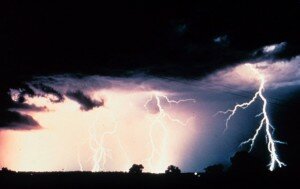Tips for Getting Ready For Disasters
 Preparing a disaster kit on a sunny afternoon can help keep you safe when the clouds roll in. While you can purchase a disaster kit with a lot of things that you need in it, you can also build your own. Building your own lets you include things specifically for you and your family.
Preparing a disaster kit on a sunny afternoon can help keep you safe when the clouds roll in. While you can purchase a disaster kit with a lot of things that you need in it, you can also build your own. Building your own lets you include things specifically for you and your family.
 You can even make a volunteer project out of building your disaster kit by helping others to build their own disaster preparedness kit.
You can even make a volunteer project out of building your disaster kit by helping others to build their own disaster preparedness kit.
What do you need for your kit?
- Three-day supply of non-perishable food.Try to avoid overly salty foods. Look for foods with a high water content. Canned foods are great for this, but don’t forget a can opener!
-
Three-day supply of water – one gallon of water per person, per day. Buying commercially bottled water is best here. Be sure to pay attention to expiration dates!
-
Portable, battery-powered radio or television and extra batteries. Emergency radios that run off of a hand crank are great to include. No need to worry about extra batteries!
-
Flashlight and extra batteries. Forever flashlights (flashlights that run off of a crank or can be charged by shaking) are great here too. No worries about batteries for these, either!
-
First aid kit and manual. You can buy a first aid kit, or you can put one together yourself. FEMA has great suggestions about what to include in a first aid kit.
- Sanitation and hygiene items (moist towelettes and toilet paper).
- Matches and waterproof container.
-
Whistle. A whistle is a great way for letting people know where you are!
- Extra clothing.
- Kitchen accessories and cooking utensils, including a can opener.
- Photocopies of credit and identification cards.
-
Cash and coins. Think about setting up a bank account specifically for emergency funds. Be sure to keep cash with your disaster kit, too.
-
Special needs items, such as prescription medications, eye glasses, contact lens solutions, and hearing aid batteries. Don’t forget to check your prescriptions regularly so that you’re not keeping expired medicine with your kit.
- Items for infants, such as formula, diapers, bottles, and pacifiers.
- Other items to meet your unique family needs.
Pack your disaster kit in something that’s easy to move in case you have to leave your home. Backpacks are great for packing your disaster kit in. Look for one that’s a bright color so you can easily find it in a hurry.
When you make your disaster kit, don’t just throw it in a the back of a closet and forget about it. Every few months, check on it to make sure all of the items in it are still good (food, water, prescriptions, and batteries all go bad).
Do you have a disaster kit in your home? What have you included in yours to help you feel safe? Let us know!
(If you want to be super prepared, add a crowbar to your disaster kit. You never know when the zombie apocalypse will happen!)


